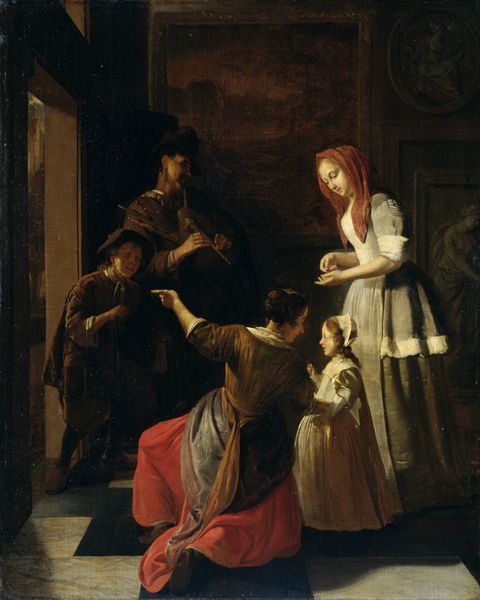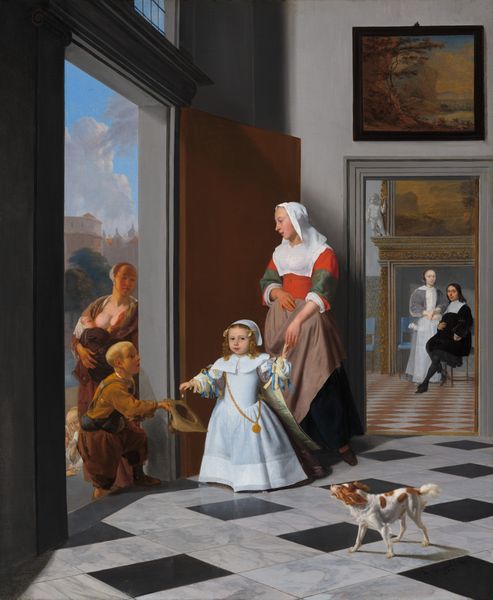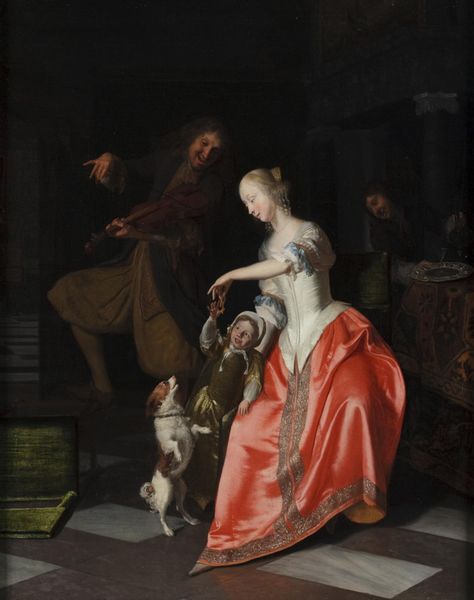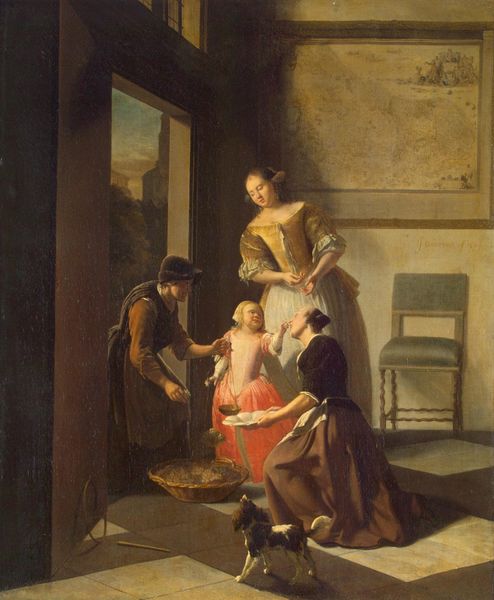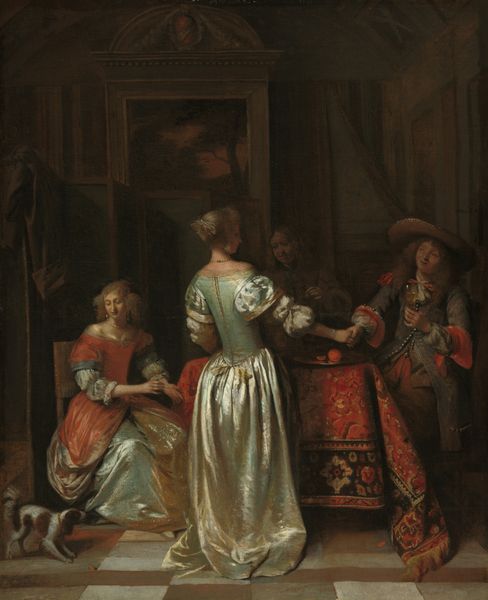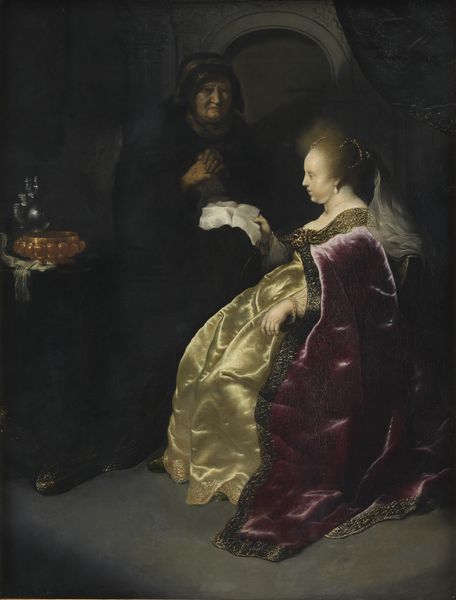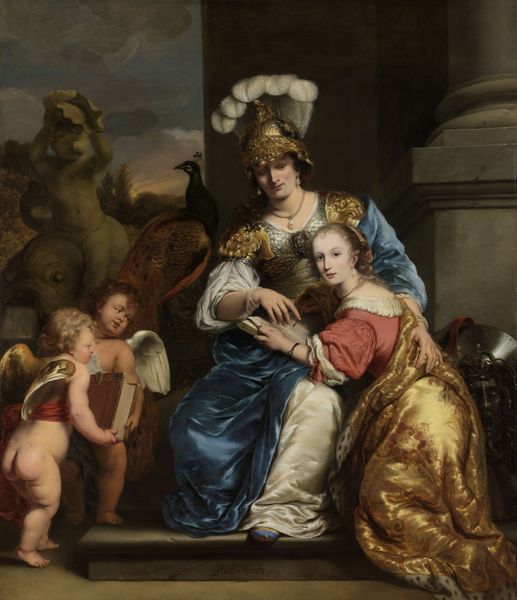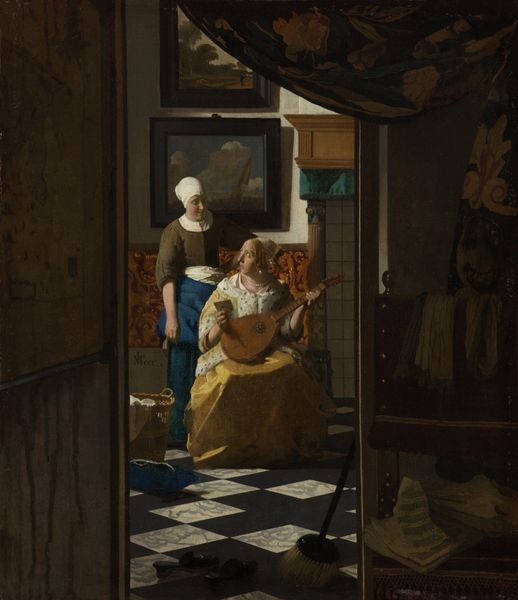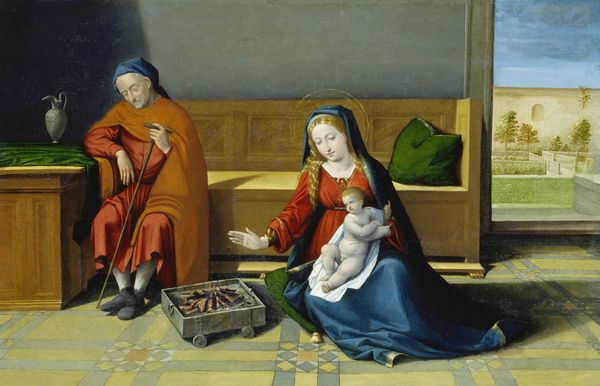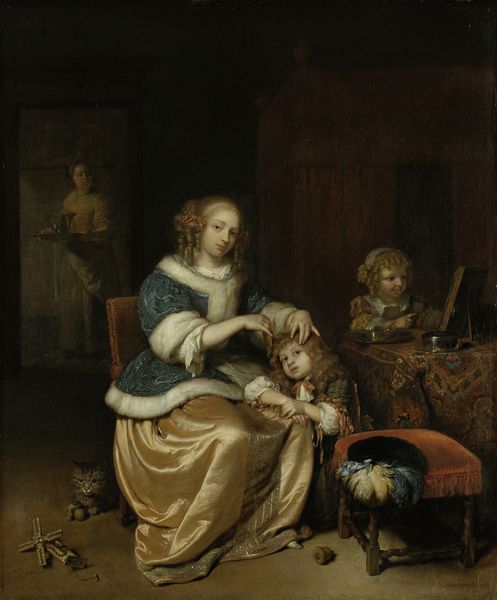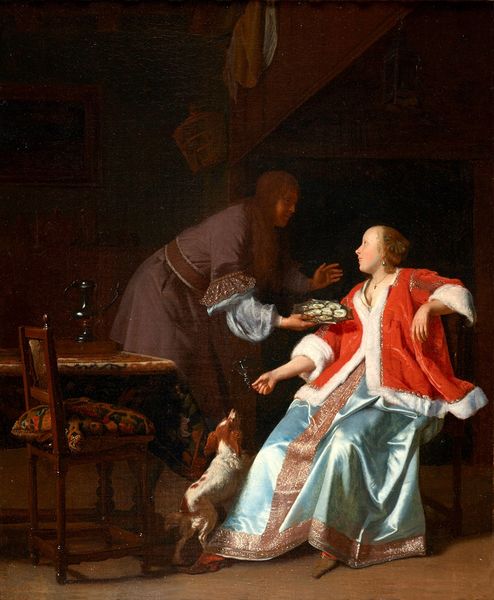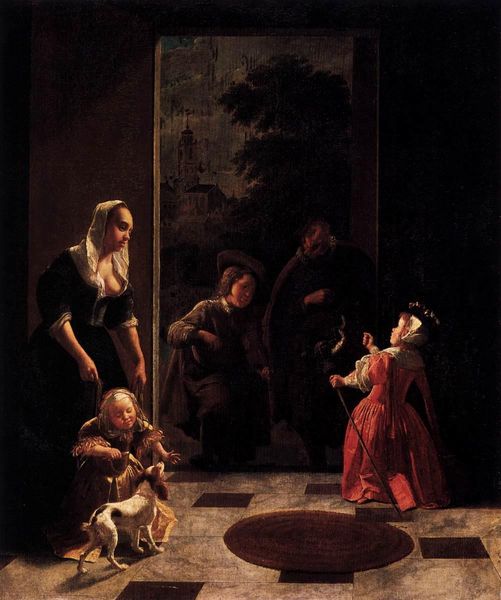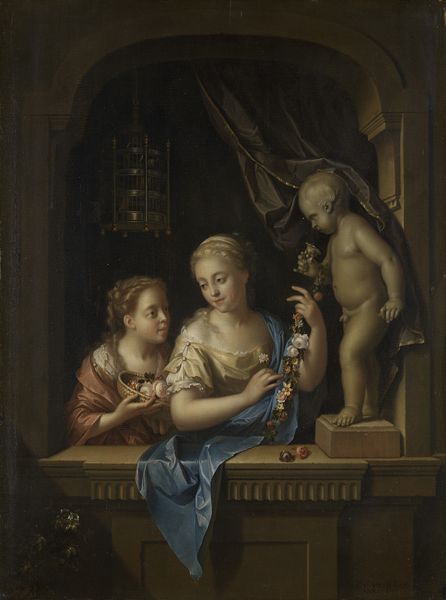
painting, oil-paint
#
narrative-art
#
baroque
#
dutch-golden-age
#
painting
#
oil-paint
#
figuration
#
oil painting
#
genre-painting
#
portrait art
Copyright: Public domain
Curator: Before us hangs Jacob Ochtervelt's "Street Musicians at the Door," painted around 1665. What's your initial reaction to this genre scene, showcasing a glimpse into 17th-century Dutch life? Editor: Immediately, I'm struck by the contrasting interiors and exteriors: that warm, well-lit room against the dimly-lit street, hinting at different social spheres. But more than that, I'm interested in the characters depicted and how their roles play off against one another. It seems like an orchestrated interplay of wealth, poverty, and performance. Curator: Indeed, Ochtervelt cleverly stages this encounter. We see a well-dressed woman seated inside a comfortable home, contrasted by the group of traveling musicians—likely poor and relying on performance for sustenance. These street musicians become embodiments of the precarity of the working classes, reliant on the whims of patronage for their very survival, even within a wealthy urban center like that glimpsed in the background. Editor: Precisely. These visual elements carry potent symbolism. The musicians embody transience and, perhaps, a disruption of the domestic sphere. Their musical offering may symbolize a plea for social mobility or recognition from those privileged enough to be untouched by the elements of the world. Do you also read this intersection through the lens of Dutch Golden Age values of charity? Curator: I do, absolutely, because the painting creates a dialogue around benevolence. How will the seated woman respond to these uninvited performers? Ochtervelt invites us to contemplate not only wealth disparity but also the ethical obligations that accompany privilege. Dutch society prided itself on its charitable institutions and civic responsibility, however, the nuances of daily practice were quite varied, making a tableau like this fascinating to consider as more than a simple depiction of musicians. The role of women within those charities is also a powerful subject for consideration. Editor: This intersection is wonderfully crystallized by the young child tentatively reaching towards the musicians, guided, but also checked, by the standing woman; it visualizes instruction, hesitation, and human connection. The tiled floor, meticulously rendered, acts as a visual grounding point—a reminder of the constructed nature of wealth and domestic stability in counterpoint with that outside. And do you notice the tower rising up outside the doorway—an emblem of city power. Curator: It's a painting brimming with symbolic weight, asking us to reflect on societal roles, power dynamics, and the human capacity for empathy within its meticulously painted setting. Editor: The enduring relevance of its themes ensures that Ochtervelt’s street scene will provoke viewers across generations.
Comments
No comments
Be the first to comment and join the conversation on the ultimate creative platform.

